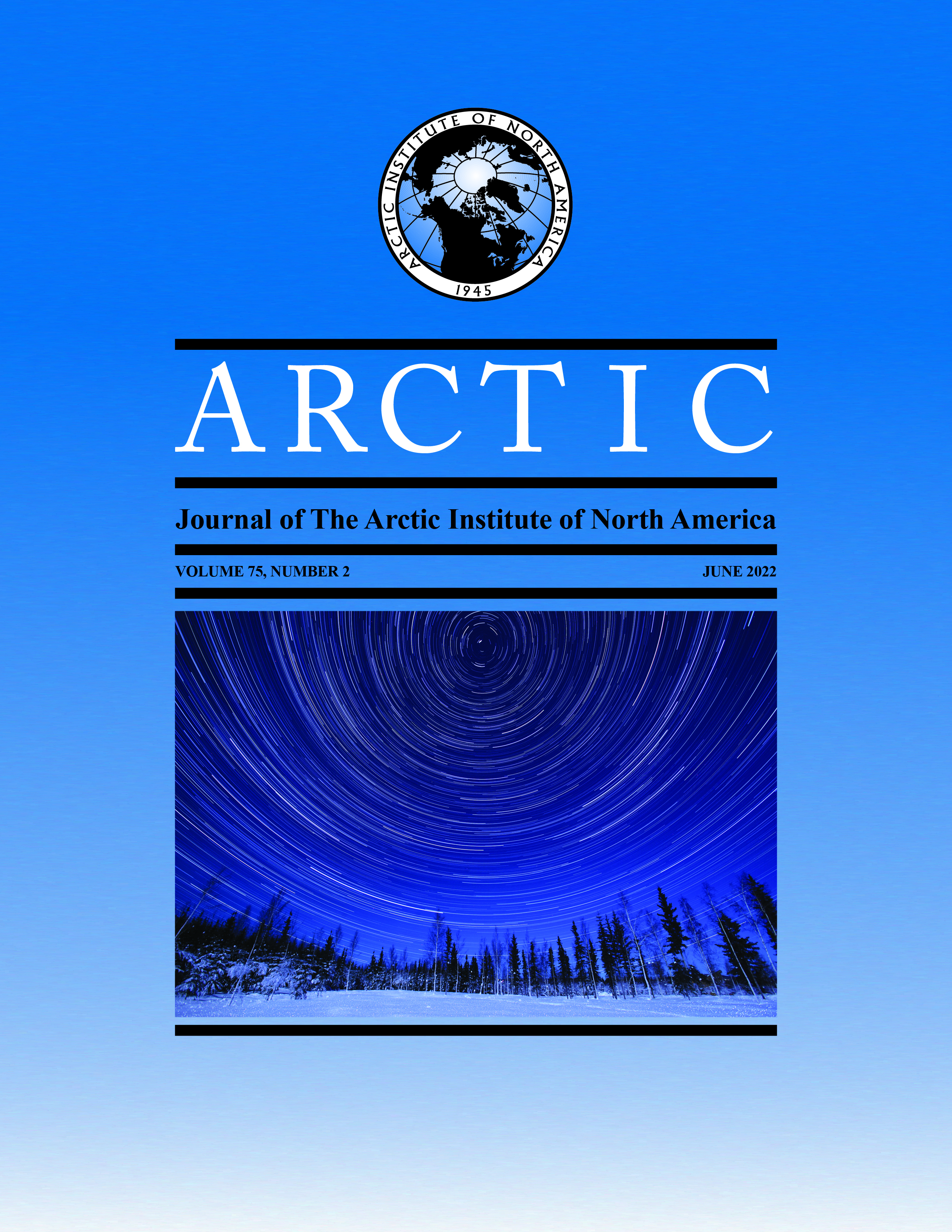On the Intermittent Formation of an Ice Bridge (Nunniq) across Roes Welcome Sound, Northwestern Hudson Bay and Its Use to Local Inuit Hunters
DOI:
https://doi.org/10.14430/arctic74957Ключевые слова:
sea ice; ice bridge; Roes Welcome Sound; Nunavut; Kivalliq; Hudson Bay; Inuit knowledge; remote sensingАннотация
Ice bridges are unique features that form when sea ice consolidates and remains immobilized within channels. They form in many locations throughout the Arctic and are typically noted for the polynyas that form on their lee side. However, ice bridges also provide a temporary platform that may be used by both humans and wildlife to cross otherwise impassable channels. For generations, Inuit in Coral Harbour, Nunavut, have used an ice bridge to cross Roes Welcome Sound and expand their hunting territory, though they report that the bridge only forms approximately every four years. Of interest both to Inuit and the scientific community is why the bridge forms so intermittently, by what mechanisms, and whether the frequency will change with ongoing warming and sea ice loss. Using satellite imagery, we determined that the bridge formed during 14 of the past 50 years (1971 – 2020). Generally, the bridge forms between January and March during a cold period that coincides with neap tide and after surface winds have rotated from the prevailing northerly (along-channel) winds to west-northwesterly (across-channel) winds. This rotation compresses the existing ice pack against Southampton Island, where it remains stationary because of the calm along-channel winds and low tidal range and coalesces under cold air temperatures. Breakup occurs between mid-June and early July after the onset of melt. Overall, the bridge forms when a specific set of conditions occur simultaneously; however, a warming climate, specifically a reduction in very cold days and a shorter ice season may affect the frequency of bridge formation, thereby limiting Inuit travel.
Загрузки
Опубликован
Выпуск
Раздел
Лицензия
Copyright (c) 2022 ARCTIC

Это произведение доступно по лицензии Creative Commons «Attribution» («Атрибуция») 4.0 Всемирная.


